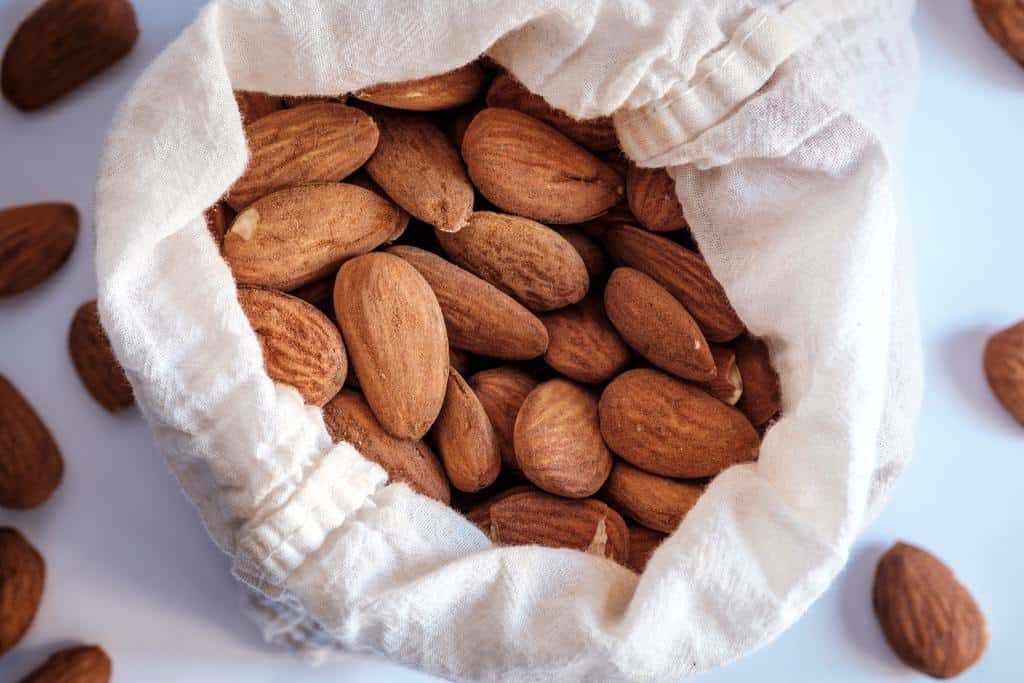
Just like getting enough vitamins in our diets we also need minerals to make sure our bodies work right. Calcium is one of the minerals we hear about all the time but we don’t hear as much about magnesium. These two minerals work together and help us in many of the same ways. But if we don’t have enough magnesium the calcium doesn’t do us much good.
Have you ever heard it said that Americans are “overfed and undernourished”? This means that we have an overabundance of food in the U.S. but most of it is lacking in actual nutrients. This is mainly because we prefer convenient processed foods much more than the natural foods that contain all the vitamins and minerals.
I want you to think about how many whole (real) foods you eat each day. Then look at the food list below to see how many of them that you’re eating regularly. Hopefully, I can simplify this information and explain how they must work together in order to benefit us.
What do calcium and magnesium do for us?
Calcium is the most abundant mineral in our bodies and is stored mostly in our bones and teeth. Here’s just a short list of what it does for us:
-
- it helps build and strengthen our bones and teeth
- it helps our muscles (including our hearts) to contract
- it helps to release neurotransmitters (chemical messengers) in our brains
- it’s required for blood clotting (along with Vitamin K)
- it activates many enzymes in the body so other things work right
Magnesium helps the calcium we take in get to where it needs to go in our bodies. Here’s a short list of other ways it can help us:
-
- it helps our muscles to function properly
- it’s a natural tranquilizer, anticonvulsant, and sleep aid
- it helps our nerves to function
- it breaks down protein in our bodies
- it makes our hearts stronger, increases good cholesterol, and decreases blood pressure
- it helps our immune systems
- it improves our glucose uptake
As I said, these are just partial lists of what these minerals do for us but I think it’s enough to show their significance!
Dietary sources of calcium and magnesium
As we all know, calcium is found abundantly in dairy products but many other foods also contain it. Here’s a short list of some of the other foods that have calcium:
-
- Kelp
- Leafy greens like collard leaves, turnip greens, beet greens, and romaine
- Almonds are a good source, but also many other nuts
- Tofu
- Salmon and sardines with the bones
- Wheat bran and wheat germ
- Dried figs, raisins, dates and prunes
- Sesame, pumpkin and squash seeds
- Olives
- Broccoli
Conveniently, you can get magnesium from many of the foods on this list too! But there are a few differences. If you want to see what other foods contain it and in what amounts check out clevelandclinic.org for their list.
Related article: Are you getting enough nutrients for good health?
Deficiency causes
I believe we should get most of our nutrients from real food as opposed to supplements but that may not always be possible. For example, a calcium deficiency can be caused by:
-
- a high alcohol, caffeine, or protein intake
- taking too much aspirin or thyroid replacement
- Heparin use (blood thinner)
- a diet high in phosphorous (soft drinks and white flour)
- low Vitamin D levels
- steroids and drugs like Methotrexate, Phenobarbital, or Cholestyramine
- high sugar diets
Much of this information is coming from the book “What you must know about vitamins minerals herbs and so much more” by Pamela Wartian Smith, MD, MPH. I find this book invaluable as an easy reference guide so I would recommend it for those of you with a general interest in nutrition.
I know you can find this information online, but with a book you don’t have to know what to search for! She lays it all out for you.
A magnesium deficiency can be caused by some of the following:
-
- a high alcohol, caffeine, or sugar intake
- Gastrointestinal disorders such as Celiac disease, infections, IBD, pancreatitis, biliary and intestinal fistulas, or chronic diarrhea
- heavy menstrual cycles
- certain medications like steroids or antibiotics
- soft drinks
- excessive vomiting
Without enough magnesium, the calcium we ingest doesn’t go to the bones and teeth where we need it. In fact, time has shown that calcium alone, like we’ve been told for decades, doesn’t slow down or stop osteoporosis. At least not without magnesium and enough Vitamin D.
Deficiency symptoms
A calcium deficiency can cause muscle spasms and twitching, high blood pressure and osteoporosis. Kind of a short but important list!
A magnesium deficiency can cause a much longer list of problems including back, neck, or chest pain; anxiety, depression, or cognitive decline; muscle spasms or cramps; cold hands or feet; difficulty swallowing; fatigue or insomnia; and heart palpitations. And that’s only a partial list!
These two minerals work together so you need to have enough of both to help. If we don’t get enough magnesium, the calcium we get deposits in our kidneys creating kidney stones but also in our arteries and cartilage. It clogs arteries which can lead to a heart attack or stroke and it can cause a form of arthritis.
So, even if you don’t have any major symptoms it might be a good idea to talk to your doctor about it, or better yet a Registered Dietitian. Doctors are actually taught little to nothing about nutrition. But with all of the resources available now you can easily do the research on your own.
We want to be healthy and avoid things like osteoporosis as we age but just taking a calcium supplement most likely won’t help. Our bodies are designed to maintain homeostasis, meaning a healthy balance. That means all the different parts need to be working right, not just some.
So do you need supplements?
According to this PubMed article, 45% of Americans are magnesium deficient and about 60% of adults don’t get the average dietary intake (ADI) of magnesium. Besides our eating habits, part of the reason for this is the decline in our soil quality over the last 100 years.
Vitamin D is also needed for proper calcium absorption. And between 25-50% of patients seen by doctors are reported to be deficient in this nutrient. The National Osteoporosis Foundation says that “Approximately 10 million Americans have osteoporosis and another 44 million have low bone density.”
This tells me that one way or another we’re missing out on nutrients with our diets alone. So do you need supplements? Probably. But getting them in the right amounts and taking them properly can be a little tricky. That’s why you should talk to a professional and do some research on your own so you better understand this problem.
Related article: How important is Vitamin D anyway?
Exercise is a must
Of course you should eat right and possibly even take supplements, but exercise is even better. It’s been proven that certain types of aerobic and strengthening exercises can help prevent or slow down osteoporosis. In fact, it’s how we build up bone mass in the first place as kids.
The smartest thing you can do is to try to prevent osteoporosis from happening in the first place. Our bone loss starts as early as our mid-20’s but speeds up after we hit menopause. So planning ahead is key. If you wait until you have it then you can only prevent more loss, you can’t get it back.
What works best?
The most common fractures from osteoporosis are in the spine, hip, and wrist. The older you are and the worse your bone mass the harder it is to recover from hip and back fractures. So weight-bearing exercises are necessary in order to maintain bone density.
In my regular workouts, I start with cardio then follow up with some strengthening exercises. I always try to incorporate jumping in my strength training because it’s good for my bones. Research has shown that jumping just 10-20 times twice a day is proven to increase bone mass density in premenopausal women.
Don’t make matters worse
If you don’t already have osteoporosis then add jumping to your workouts. But if you’ve already been diagnosed check with your doctor first about what exercises are appropriate for the severity of your condition. You don’t want to make matters worse by causing fractures and they can happen very easily.
Working with a physical therapist would be a good idea if you do have osteoporosis to make sure you’re doing things safely. Walking is always a good form of exercise but it hasn’t been shown to be very effective for slowing osteoporosis. So make sure you’re doing enough to help yourself.
If you’re a woman over 40 and live in my area, I would love to help you with personal training! If you’re not sure what you should be doing and/or embarrassed to work out in a gym with others, then this is a perfect option.
My final thoughts
I believe that being healthy starts with getting the nutrients our bodies need from real foods. Then we need to look at our own situations and determine if anything extra is needed to help. We may not have control over our genes but we have a lot of control over our diets and lifestyles.
I’m certainly not opposed to supplements but we have to take them seriously and understand what to take, how, and when to take them. The ones that work together require the right proportions of each to be of help. And it really is possible to get too much of a good thing!
Calcium and magnesium and both necessary for good health so it’s important to educate yourself on them and get what you need. But beyond that, exercise is one of the best things you can do to protect and preserve your body for the future.
Knowledge is power so don’t wait until you have a problem to start dealing with it.

